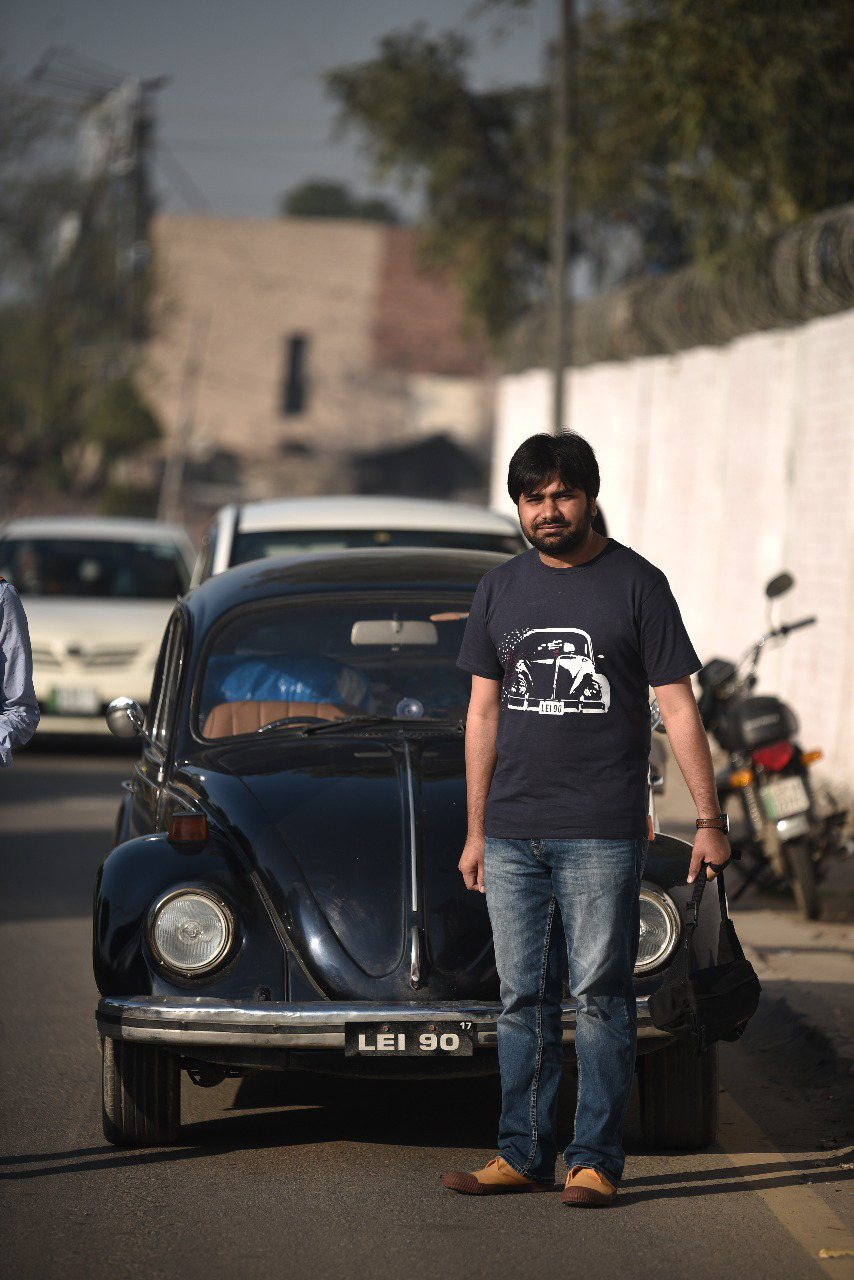Meeting with Mudassir Zia at the Mahfooz Shaheed Garrison Underpass
- NAVEEN
- Sep 13, 2019
- 3 min read
Updated: Sep 15, 2019
I get out of the car and walk towards the Mahfooz Shaheed Garrison Underpass, and behind me I hear the noise of a car. I turned around and was surprised to see that Mudassir was driving a 1969 Volkswagen Beetle. ‘What a cool cat!’, I thought to myself.
For the first time I’m early to the filming location. I’m meeting Mudassir Zia, Founder of Street Art Pakistan, an anti-wall chalking campaign where groups of artists participate in art competitions to reform the walls of Pakistan.
As mentioned in our first post on the initiative, political parties are largely involved in wall-chalking for political purposes despite there being laws in place against the illegal practice. The spread of propaganda is not only negative but also ugly – ruining the décor of Pakistan’s streets and sidewalks. Mudassir has created a network of young, aspiring and passionate artists to scrape off posters and advertisements from the public walls and replace them with beautiful and colourful murals depicting Pakistan’s history and culture.
I get out of the car and walk towards the Mahfooz Shaheed Garrison Underpass, and behind me I hear the noise of a car. I turned around and was surprised to see that Mudassir was driving a 1969 Volkswagen Beetle. ‘What a cool cat!’, I thought to myself.
We are in Cantt, an area of Lahore that is closely monitored by the military because of the presence of the 10th and 11th divisions of the Army . We are also close to the Wagah Border and the ‘Radcliff Line’, the demarcation between India and Pakistan created in 1947 following Pakistan’s Partition from the Indian Subcontinent. This border was where migrants from India entered Pakistan.
Thanks to Street Art Pakistan, and Mudassir Zia, today Cantt is also home to a one kilometre long painted mural displaying 100 years of Pakistan’s soldiers’ actions, both before and after partition.
It runs almost the full length of the Mahfooz Shaheed Garrison Underpass.
Whilst we walk through the underpass, Mudassir shares that this mural is particularly important to him because it commemorates the life of his brother, Major Mustafar Sabir Shaheed, a Pakistani soldier who died in the line of duty fighting against terrorist groups in Tirah Valley, Pakistan. The underpass was inspired by the strength and bravery of Mudassir’s brother, and of all the soldiers fighting for Pakistan.
The mural is a continuous painting, transitioning through history. It starts with the first world war, in the year of 1914, when the British Army's 10th division was made up largely of soldiers from the Indian subcontinent. This section is beautifully captured in black and white, inspired by the old news footage and archive photos of the war.
The mural then transitions to the period of partition between India and Pakistan. It focuses on the struggle faced by those who were displaced during that turbulent time. The message is made all the more poignant by its proximity to the Wagah Border where migrants moved between the two newly founded countries.
One of those migrants was my own grandmother. She was sent with her siblings to Pakistan to stay with a relative, and their parents never made it to join them. It has always been a part of my family history, but their experience, so distant from my own, is unnervingly present here.
The history of Pakistan’s partition from the Indian subcontinent was painted in a sepia tone, it has a reddish brown monochrome tint. The technique perfectly captures the evolution of TV and print news technology.
The mural documents historic events of the Partition such as political rallies that took place as well as the famous Muslim League Conference.
The sepia palette then transitions to a stark red to represent the Indo-Pak war which took place between 1965 – 71. One soldier stands out in the mural, Mahfooz Shaheed, for whom the underpass is named. He died fighting against the Indian Army in 1965.
It is no coincidence that Mudassir’s brother and the famous Mahfooz for whom the underpass is named have the same surname. Islamic custom dictates that and soldier killed in the line of duty is given a surname ‘shaheed.’
After the tribute to the Indo-Pak War the painting transitions to full colour to represent how the Pakistan Army operates in modern day.
Now the mural narrates the presence of Pakistani soldiers in Swat and other operation areas of Khyber Agency and Waziristan.
This part of the mural is particularly sentimental to Mudassir, because it was during this operation that his brother passed away, in 2013. Later on in the day, I ask Mudassir of his biggest accomplishment during his time setting up Street Art Pakistan and he explains to me it is painting the MS Garrison Underpass. This is his personal tribute to his brother’s legacy and all the soldiers who have and continue to fight for the safety of Pakistan’s citizens.





























Comments